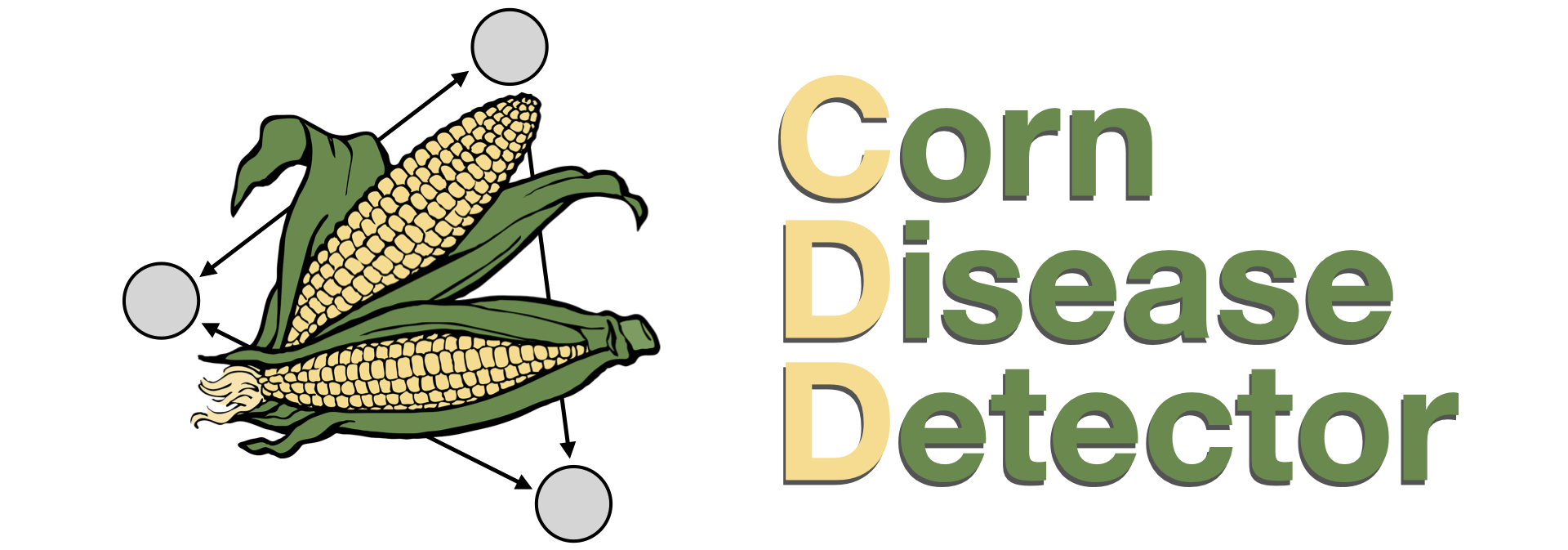Corn Disease Detector
September 7, 2021
This project was built as a final group assignment during the Saturdays AI Quito 2021 artificial intelligence workshop.

Figure 1.- Logo of the Corn Disease Detector project. Retrieved from https://corndiseasedetector.github.io/.
Background
Infectious diseases are a major threat for many crops of high importance for the food security of many regions of the world. Each year, around 60% of farmers in Ecuador have reported pre-harvest losses due to infectious agents such as fungi and bacteria, in crops like banana, cacao, and potato. Outbreaks of infectious plant diseases could endanger the country’s economy and cause many people to lose their jobs. This project was an effort to develop an early plant disease detector as a proof of concept, using publicly available datasets of maize. In the future, we plan to expand this project to cover other important farming Ecuadorian species.
Dataset
The image dataset splitted in training, validation, and test used to build our model is available at this link.
About the model
Our model was a classifier based on convolutional neural networks, trained to recognize two types of maize infectious diseases: Common rust of corn and Northern corn leaf blight. The available datasets for maize are too small to be used in deep neural networks. To solve this problem we used a Transfer Learning strategy and reused some layers from a ResNet50 neural network trained on the
ImageNet dataset, from
torchvision.models.resnet50. In this way, general image patterns are identified by pre-trained layers, and we trained additional layers of the network to identify healthy and diseased corn images. This network architecture has shown very promising results in
previous studies of computer vision for agriculture.
The main library used to build our model was
Pytorch, and we trained it using Google Cloud GPUs through Google Colab.
Additional information
The complete information regarding model performance metrics, a web application to test CDD, a jupyter notebook of reference to reproduce our work, and further details are available on the GitHub Page of the CDD project.
- Posted on:
- September 7, 2021
- Length:
- 2 minute read, 330 words
- Categories:
- Machine Learning Computer Vision
- Tags:
- Python Agriculture Neural Networks